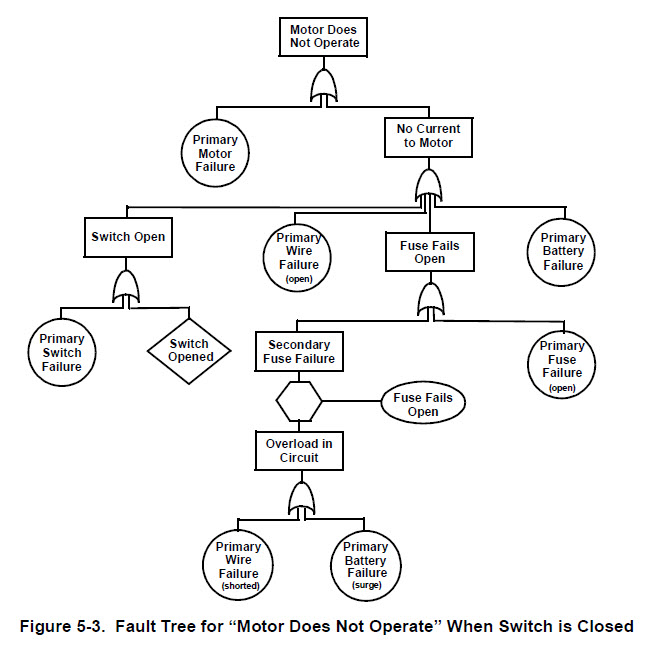Fault Tree Example
Some of the basic aspects of a fault tree construction can be explained through an example of a d.c. motor circuit.

The following steps indicate how a fault tree is constructed for a motor circuit when it does not operate when the switch is closed.
1. Decide what the undesired event of this system is and define it:
Top event = Motor does not operate when the switch is closed.
2. Next, deductively determine the reasons why the motor may not operate. Such reasons may be:
◦ Some internal faults exist within the motor itself, which is a basic motor failure. (Because this is a primary fault, it does not have to be developed any further in the fault tree.)
◦ The motor is not receiving any current. This fault event can be further developed to determine the causes for why the motor may not be receiving any current. Possible causes include:
1. The fuse may be in an open circuit failure mode due to over current in the circuit.
2. The switch may be in an open circuit.
3. The battery may have failed. (Because this is a basic event, it does not have to be developed any further in the fault tree.)
4. The connecting wire of the circuits may be open. (Because this is a basic event, it does not have to be developed any further in the fault tree.)
3. Decide the logic connecting the above events. In this example, an OR gate connects these particular events.
4. Determine if any of the causes need to be further developed. For example, a fuse can open if there is an over current in the circuit. However, the fuse does not open unless the over current is sufficient to melt the fuse. Therefore, fuse failure can be due to two reasons.
◦ Secondary fuse failure is caused by bad fuse design or the selection of an inappropriate size of fuse wire.
◦ Primary fuse failure is caused by an overload in the circuit. This fault event can be further developed to determine the causes for the overload. Possible causes include:
1. The lead wire to the motor terminals shorts.
2. The power supply voltage to the motor may be suddenly very high.
In the following figure, the event, Switch Open, is not developed further because sufficient information is not available. Therefore, it is an undeveloped event. |
